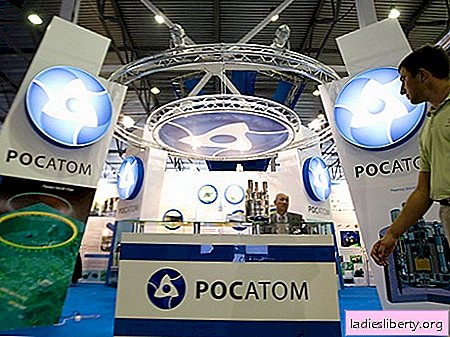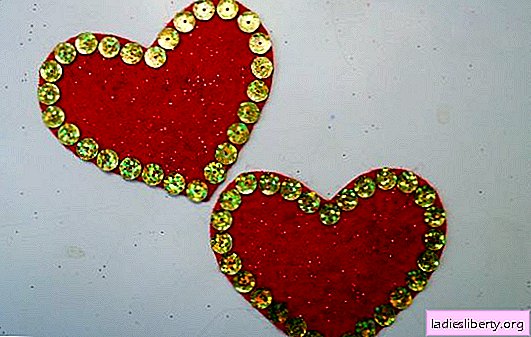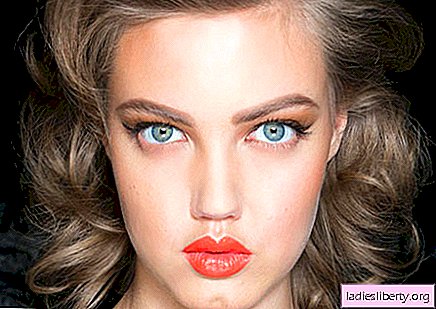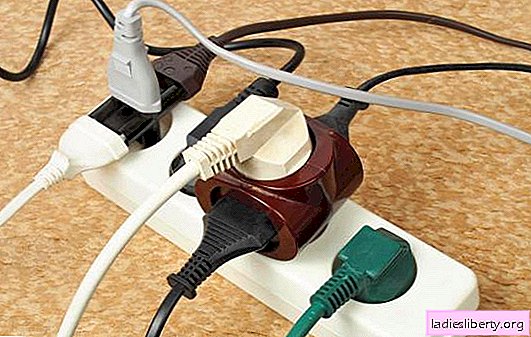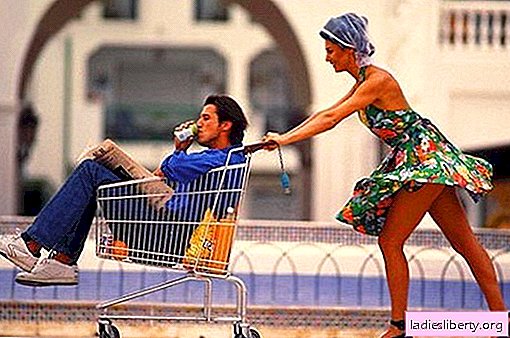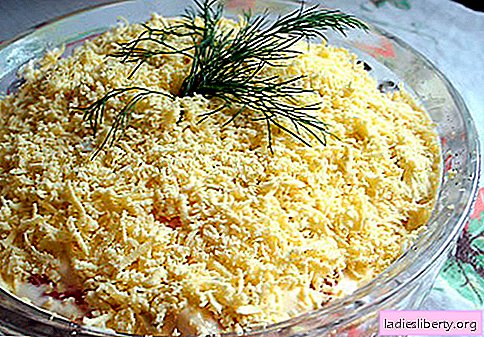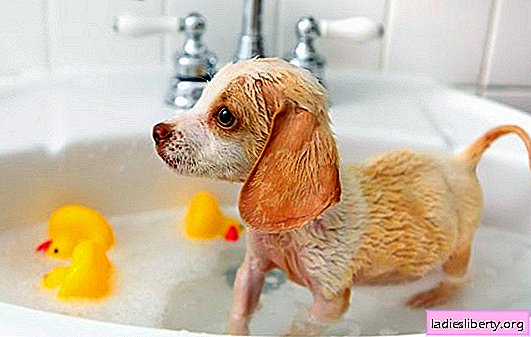
Growing up, active kids enthusiastically study the world around them, without ignoring the seductive puddles and carrion. Although dog hair is protected from dirt and moisture by the natural fat layer, periodic bathing is necessary for the pet.
In order to keep the animal’s hairline healthy, it is important for every inexperienced owner to know how to properly wash the puppy.
When to start washing your puppy and how best to do it for the first time
In the first days of life, washing their newborn puppies is carried out by their mother, carefully licking their offspring. Experts advise starting an acquaintance of young animals with water and shampoo 2-4 weeks after vaccinations, which must be done at two months of age. In order for the baby to get used to the water and in the future enthusiastically perceive meetings with the bath, the first bathing in his life should be accompanied only by positive emotions.
• Set aside all things. Neither the lessons of the children nor the preparation of dinner should distract you from bathing your pet. Prepare the necessary accessories in advance: towels, shampoo and wool brushes.
• If you use the bathroom for the procedure, put it on the bottom non-slip mat. Fill the container with 5-10 cm water (depending on the size of the doggie). The kid should not think that he is drowning.
• Tame your little friend to swimming gradually. Let him hear the sound of water and get used to it. Then you can play with the doggie by spraying water on the wool. After all the puppy's anxieties have settled, gently place him in the liquid. Turn washing into fun, take your favorite toys with you. Constantly praise the pet, talk with him, give him a treat.
Observing these simple rules, you will help your baby overcome the fear of swimming and subsequently perceive meetings with water and shampoo as a pleasant game.
How often to wash a puppy
When washing a dog with special products, the natural protective fat film of the coat is destroyed. Recovery requires at least six weeks. Frequent bathing with detergents leads to the appearance of parasites and diseases of the coat and skin: alopecia, seborrhea, eczema, dermatitis.
To the question of how often to wash the puppy, experts answer: "As necessary, but at the same time as little as possible." The frequency of water procedures depends on several factors: the place of keeping the pet, participation in exhibitions, the length of the coat and the presence of allergies among the owners. On average, veterinarians recommend washing a young animal no more than 3-5 times a year. In running water, the dog is bathed once a month. If you feel that the dog smells unpleasant, wipe it with sanitary napkins purchased at the pet store.
Attention! If your pet has become infected with a fungus or parasites, you should buy it several times in a row, treating it with special preparations after the procedures. Medicines and the treatment regimen are prescribed only by a veterinarian.
Basic rules of water procedures
It is recommended to wash the puppy in the evening, after feeding and walking.
1. To avoid drafts, close the room door. Pour some warm water into the bathroom (about +36 ° C). For bathing babies of small breeds, it is better to use a separate container - a basin or a trough.
2. Comb your pet's hair thoroughly. Insert cotton swabs into the baby’s ears. Place the dog in a container of water.
3. Gently and evenly wet the animal. Dilute the shampoo with water in a ratio of 1: 4, whisk it and, starting from the withers, apply foam onto the dog with massaging movements. Last of all, they wash their neck and face. Do not pour water on your head, as this may cause fluid to enter your nose and ears.
4. Do not use detergents intended for people. The ingredients in the “human” shampoos negatively affect the sebaceous glands of the dog and cause allergic reactions, dandruff and itching. Perfumery fragrance is also unlikely to please your four-legged friend.
5. As a finishing touch, a softening balm can be applied to the wool. Then, rinse the animal liberally several times with running water. Dry your pet dry with a soft towel, remove the tampons from your ears. If you use a hair dryer, dry the hair in the direction of its growth and avoid hot air. At the end of the procedures, thoroughly comb the puppy. After 3-4 days, treat it with parasites.
When it is forbidden to bathe puppies
There are periods when it is necessary to refrain from washing and replace it with other methods of cleaning wool:
• During an illness and within 10 days after its termination.
• In the presence of skin pathologies (lichen, dermatitis, ulcers, eczema) and visible injuries (cuts, wounds, deep scratches).
• After vaccination. The baby needs an average of 7-10 days to recover. During this time, you need to carefully monitor his health. Often in the first week the puppy's temperature rises - this is normal after vaccination. But any contact of the animal with water should be prohibited. Since the vaccine weakens the immune system, bathing can cause hypothermia and the common cold.
• After rabies vaccination, washing your puppy is allowed only after two weeks. Since this vaccine is the most difficult to tolerate for an animal, getting moisture at the injection site can cause skin problems, gastrointestinal problems and apathy.
How to wash contaminated puppy hair if swimming is prohibited? In such cases, veterinarians advise using a damp cloth moistened with a weak solution of citric acid and water in a 1: 1 ratio.
We return from the walk: how to wash the puppy's paws
If the baby is swimming as little as possible, then washing the paws after street walks should be a mandatory procedure. And it's not just about hygiene. Chemical substances spilled on the ground remain on the pads (the reagents used to treat the streets in winter are especially dangerous). In addition, even hard soles of the soles can damage glass fragments, spines, and splinters.
Teach your friend to patiently wait in the corridor until you complete the necessary manipulations. Prepare your inventory: basin, shampoo, rags (microfiber is best) and a dry towel.
Attention! In the cold season, use only cool water - the temperature difference can adversely affect the condition of the skin. In winter, first wet your stomach and paws, apply detergent, rinse it with water and pat it dry with a towel. In summer, in dry weather, just wipe the paws with a damp cloth.
After each walk, carefully inspect the paw pads. If even the slightest scratch is found, treat it with a disinfectant.

